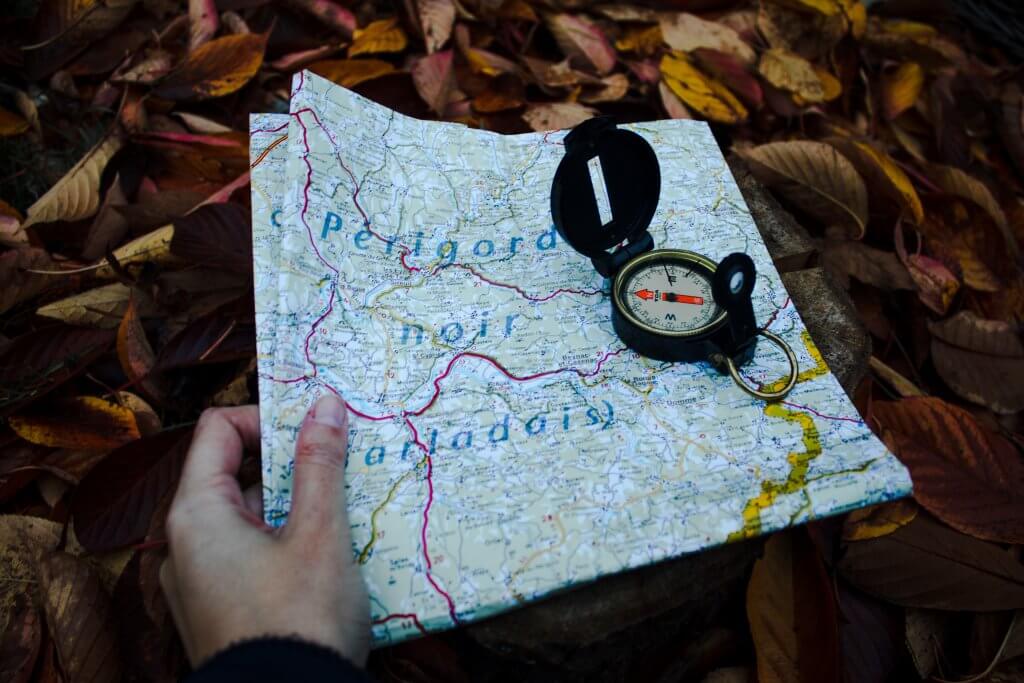Finally demystify this things which every customer experience professional is talking about these days.
Published in: Journey Mapping / Last update: August 2020
In order to fully understand what customer journey mapping is, we need to explore its relationship to the customer journey and the customer journey map. We'll get to that in a minute.

First, let's start with a practical definition of customer journey mapping. To put it simply:
Customer Journey Mapping is the ongoing activity of making the steps a customer goes through in order to achieve a specific goal explicit, in a visualization that looks like a map, including the needs and emotions of the customer throughout the entire process.
A very important part of the journey mapping process is gathering the actual data that goes into the map through qualitative user research. How else would you know what to visualize?
So, don't be misled into thinking that journey mapping is just about the visual aspect of the map. Journey mapping is just as much about analyzing data and structuring it in a meaningful way.

These days, professional journey mapping tools have made it possible to take the journey mapping process online and collaborate on a journey map even when you're not physically in the same space.
What is a customer journey map?
A customer journey map is often also referred to as simply a journey map. The previous section already gave it away in large part, but let's zoom in a bit closer on what a journey map is.
A Customer Journey Map is a visual representation of the steps, activities and situations a customer goes through in order to achieve a specific goal, including the needs and emotions of the customer. It keeps evolving and is never done.
Customer journey maps literally come in all shapes and sizes. This can be quite confusing if you're new to the practice.
But it's not that strange when you think about it. Take geographic maps as an example. Sometimes you want a very detailed map that helps you navigate on street level, but while planning your next summer holiday, a map with a worldview might be what you need.
The same goes for customer journey maps. High-level journey maps act as a strategic compass, while detailed maps help you plan actions and allocate resources on a day-to-day level.

More than Metrics (company behind Smaply) wrote a very interesting article that digs deeper into the similarities between journey maps and geographic maps.
Why a map?
Why a journey map and not a journey flow or journey chart? What is so special about maps?
We have to look at the purpose of a map.
Maps help you understand where you are today and navigate to where you want to be tomorrow.
You create a journey map because there's a situation that you want to improve. You want to create a better future. A map helps you make better and more informed choices about the steps you need to take toward that desired future state.

When you're in the field of creating a better customer or employee experience, a major part of your work revolves around navigating complexity. That's why you see so many different types of maps used in this field.
Linn Vizard has a very insightful presentation about the parallels between designers and cartographers, which I highly recommend.What is a customer journey?
Now we get to what is maybe the most important question: What is a customer journey?
When you have a clear answer to this question, figuring out what you need to visualize in your journey map becomes much easier.
The Customer Journey is a story with a beginning, middle and end, which describes how a customer (the lead character) tries to achieve a desired goal (the destination).
When your lead character isn't a customer but rather an employee, user or patient, then the customer journey becomes an employee journey, user journey or patient journey.

Now, here's the thing that makes customer journeys so powerful...
This way of reasoning helps you see how your services fit into the bigger story—how they can help the lead character achieve their desired goal.
This is essentially what "outside-in thinking” or "customer-centricity" is all about.
You use the customer journey to capture an already existing story. And you use it to envision a future story. The act of closing the gap between these two stories is what has emerged as the field of service design.The Relationship Between Customer Journey, Customer Journey Map, and Customer Journey Mapping
It's time to bring together the 3 elements we've discussed and see how they relate to each other.

We can summarize it this way:
Looking for more?
I hope that you found this article helpful and that it gave you some clarity.
There's of course much more to be learned about journey maps and journey mapping.
If you want to dig even further into this topic, make sure you join the Customer Journey Mapping Essentials masterclass. In just 60 minutes, this masterclass will get you up to speed on the fundamentals of journey mapping.
